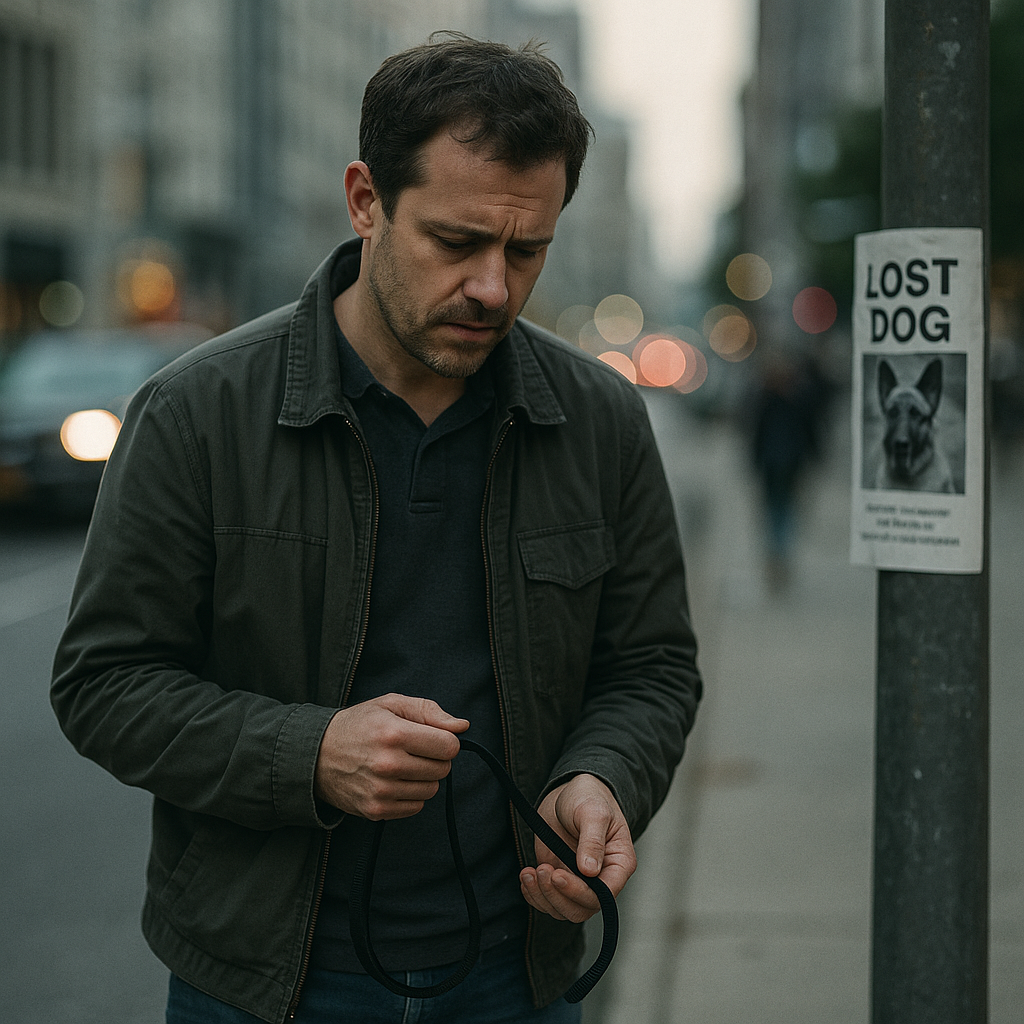What to do if I lost my dog in the city?
By Lost'Him Team • February 21, 2025

Losing your dog in the city is a stressful and dangerous situation. With traffic, noise, crowds, and many possible escape routes, a lost dog can quickly get far away or put themselves in danger. That’s why it is essential to react immediately and methodically to maximize the chances of finding them safe and sound.
With the Lost’Him app, you can report the disappearance in real-time, alert the community, and quickly mobilize help.
1. Stay calm and in place: your dog may return
A lost dog in the city may panic and:
- Run without thinking, increasing the risk of an accident.
- Stop after a few streets and try to find their way back.
- Return to the starting point once they have calmed down.
👉 What should you do immediately?
- Do not chase them: This might make them think it’s a game or stress them even more.
- Stay at the location where they disappeared for a few minutes and call them gently.
- Use a calm and encouraging tone to make them return to you without fear.
- Listen carefully: they may bark, whimper, or make noise while hiding.
- Leave behind a piece of clothing with your scent if you have to leave temporarily.
💡 Panicked dogs may run far, but they often return to their tracks once they calm down.
2. Immediately report the disappearance on Lost’Him
The Lost’Him app allows you to report a lost dog in real-time and quickly mobilize the local community.
👉 How to use Lost’Him effectively?
- Create an alert immediately by providing the exact location where your dog disappeared.
- Enable geolocated notifications to notify veterinarians, shelters, associations, pet sitters, and nearby users.
- Share your alert on social media directly when reporting the disappearance.
- Print the poster generated by Lost’Him and distribute it in high-traffic areas and to residents.
💡 The quicker the report is made, the higher the chances of finding your dog!
3. Immediately inform passersby and local businesses
A lost dog in the city might attract attention, but if people don’t know they are lost, they won’t react.
👉 Talk to people around you
- Quickly approach shopkeepers, delivery workers, security guards, and passersby to ask if they have seen your dog.
- Show a recent photo on your phone.
- Give precise descriptions: collar color, size, behavior.
👉 Inform drivers and transport services
- If you are near a bus or subway stop, ask drivers to report if they see a stray dog.
- In some cities, taxi or public transport drivers can relay the information to colleagues.
💡 First witnesses are crucial: the sooner they are informed, the more they can help find your dog.
4. Search in strategic locations
A lost dog in the city instinctively looks for safe places.
👉 Where to search first?
- Parks and green spaces: They may stop there to rest and explore scents.
- Quiet streets and alleys: A stressed dog avoids noisy areas.
- Places where they might be trapped: Under a car, in a basement, a construction site, a closed courtyard.
- Store entrances: They may be drawn to familiar smells.
- Their usual walking route: Some dogs follow their daily walk routine.
💡 If you have multiple people searching, divide search zones.
5. Contact shelters, veterinarians, and municipal police
If someone finds your dog, they will likely take them to a veterinarian, shelter, or municipal police.
👉 Who to contact?
- The municipal pound: They often collect stray dogs reported by passersby.
- Local veterinarians: They will check for a microchip and contact you if found.
- Shelters and animal protection groups: Some people bring found dogs to these organizations.
- Municipal police: Some officers are informed of stray animal reports.
💡 Call multiple times a day, as reports can update frequently.
6. Follow-up and prevention
Once your dog is found, it’s essential to determine why they escaped and take preventive measures.
👉 Equip them with a GPS collar
A GPS tracker allows real-time tracking of your dog.
👉 Work on recall training and leash walking
- Regularly reinforce recall training.
- If your dog panics easily, consider using a no-escape harness.
👉 Check their walking gear
- A well-fitted collar prevents them from slipping out.
- A strong leash reduces the risk of accidental breakage.
💡 Good prevention greatly reduces the risk of losing your dog in the city.
Conclusion: Act quickly and mobilize the right resources
- ✅ Do not chase them, but stay in place and call them calmly.
- ✅ Report the disappearance on Lost’Him to alert the local community.
- ✅ Immediately alert passersby and shopkeepers.
- ✅ Search in strategic locations (parks, alleys, familiar spots).
- ✅ Contact the pound, veterinarians, and municipal police.
💡 With Lost’Him, every report is shared in real-time to maximize the chances of quickly finding your dog. 🐶💙
 EN
EN  FR
FR